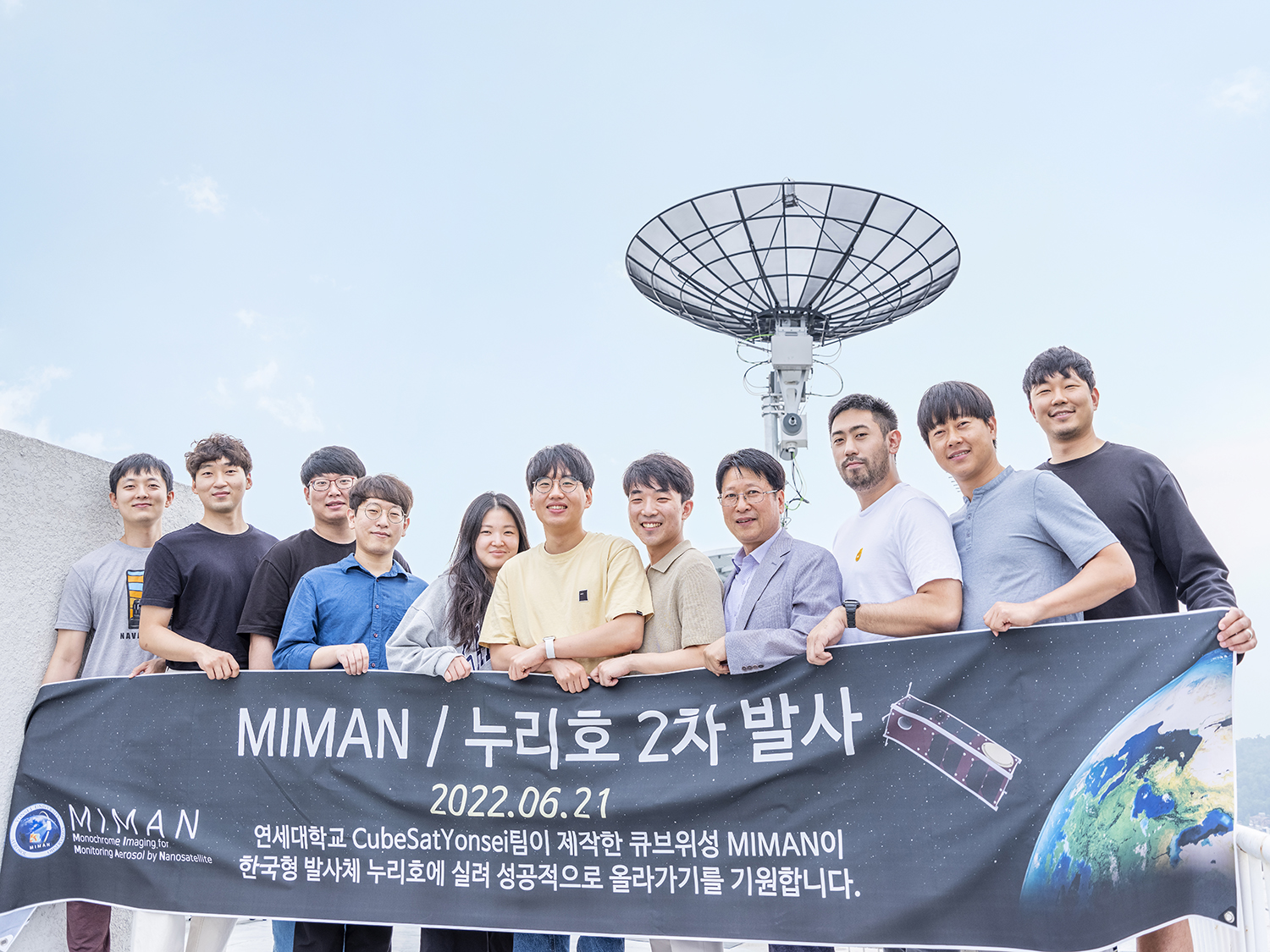- Into the Unknown with Infinite Possibilities June 28, 2022
-
"Cubesat Yonsei," Yonsei University's Student Satellite Development Team
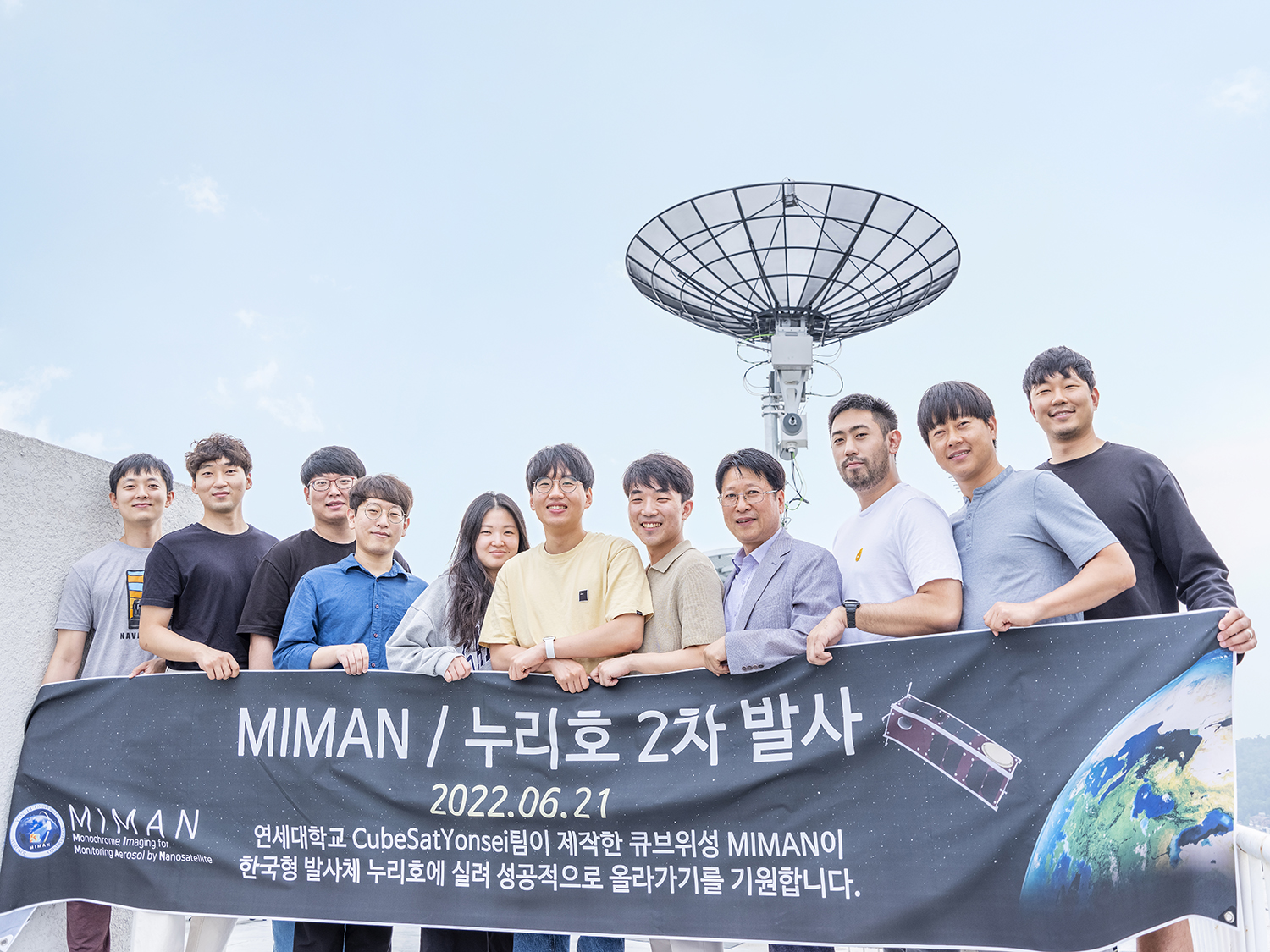 Cubesat Yonsei Members and the Supervisor Professor Sang-Young Park
Cubesat Yonsei Members and the Supervisor Professor Sang-Young ParkAnother New Challenge on Board
It was June 21 at the Naro Space Center in Goheung, South Korea. The countdown began, and soon after, the "Nuri," also known as the "KSLV-II" (Korea Space Launch Vehicle-II), headed for space. Fifteen minutes later, the Nuri successfully disconnected its performance verification satellite and landed in orbit at the target altitude of 700 kilometers. As a result, South Korea became the seventh country to launch and operate a practical satellite with its own technology. It was a historic moment that paved the way for space.
At the moment of the rocket launch, there were people who were even more nervous than the projectile R&D members: the members of Yonsei University's satellite development team, "Cubesat Yonsei." The Nuri projectile was equipped with a performance verification satellite, as well as four cube satellites, each developed by students from four universities. One of them is the "MIMAN" (Monochrome Imaging for Monitoring Aerosol by Nano-Satellite), a cube satellite developed by Cubesat Yonsei. The team enjoyed the joy and reward of being part of the moment South Korea opened the door to space development.
"MIMAN," a Fine Dust Detection Mission Satellite
The mission of "MIMAN," the nanosatellite which Cubesat Yonsei has been developing since 2019, can be deduced from its name. MIMAN, a "fine dust monitoring" satellite, will orbit the Earth in a low orbit of 700 kilometers, passing over the Korean Peninsula and the Yellow Sea every other day to take pictures of fine dust. Although it is a nanosatellite with a width of 10cm, a length of 10cm, and a height of 34cm, it will play a role in complementing fine dust observation information provided by the geostationary satellite Chollian-2B. Cubesat Yonsei has a conviction that the MIMAN has specialized strengths in collecting fine dust data in the Yellow Sea.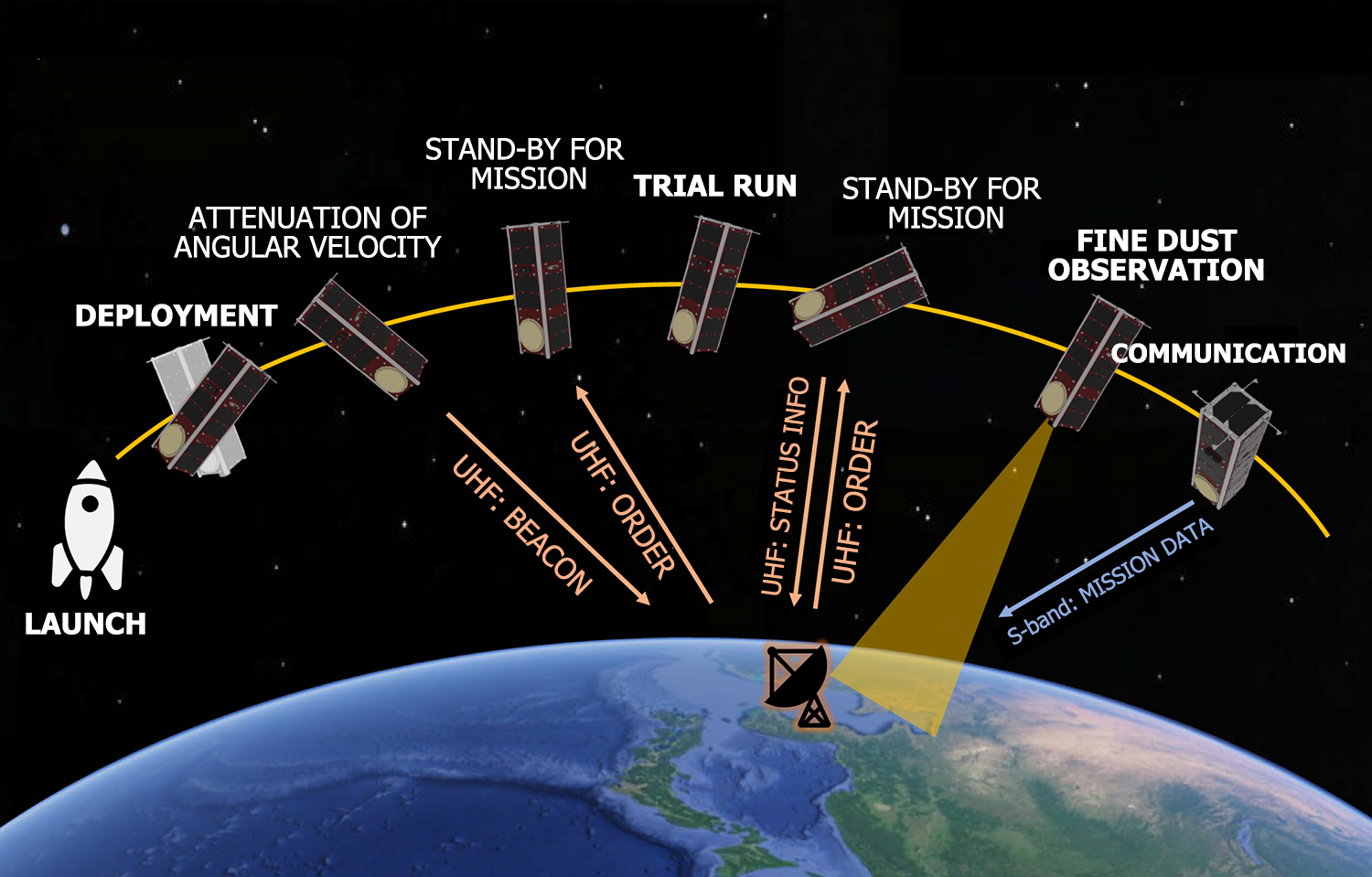 MIMAN's Mission / Contributed by Cubesat Yonsei
MIMAN's Mission / Contributed by Cubesat Yonsei"The focus on the fine dust mission came about due to the huge public interest regarding the fine dust problem in Korea in 2019, at the initial stage of the project. We wanted to create a practical cube satellite with a function that could respond to social issues. The MIMAN will be responsible for observing signs of fine dust in the 400km by 400km area around the Korean Peninsula with a high-resolution optical camera. It is equipped with a camera with a resolution that can recognize by 200 meters. Although the Chollian-2B has already been collecting fine dust data, it is about 36,000 km away from the surface of the Korean Peninsula. The performance is good, but it is difficult to make detailed observations due to the distance. The MIMAN takes pictures at low altitude, capable of observing the East Asian region with high spatial resolution, which can improve the quality of the research data."
- Professor Sang-Young Park, Supervisor of Cubesat Yonsei
The fine dust data to be secured by the MIMAN will contribute to the enhancement of the accuracy of fine dust observation by improving the quality of the data through cooperation with the team of Professor Jhoon Kim from the Department of Atmospheric Sciences at Yonsei University, which studies the fine dust data of Chollian 2B. The following project also marks an opportunity to pursue further progress by creating synergy beyond each Yonsei laboratory's boundaries.
"It's been about ten years since the establishment of the team Cubesat Yonsei. Universities mainly do research and education. But the research is based on theory rather than substantiality. When I was hoping for something more visible, the development of cube satellites began in the United States. I thought it would be good to melt the results we have learned and researched into a cube satellite and use them in reality. At that moment, a satellite contest was first held in South Korea, so we began our challenge."
- Professor Sang-Young Park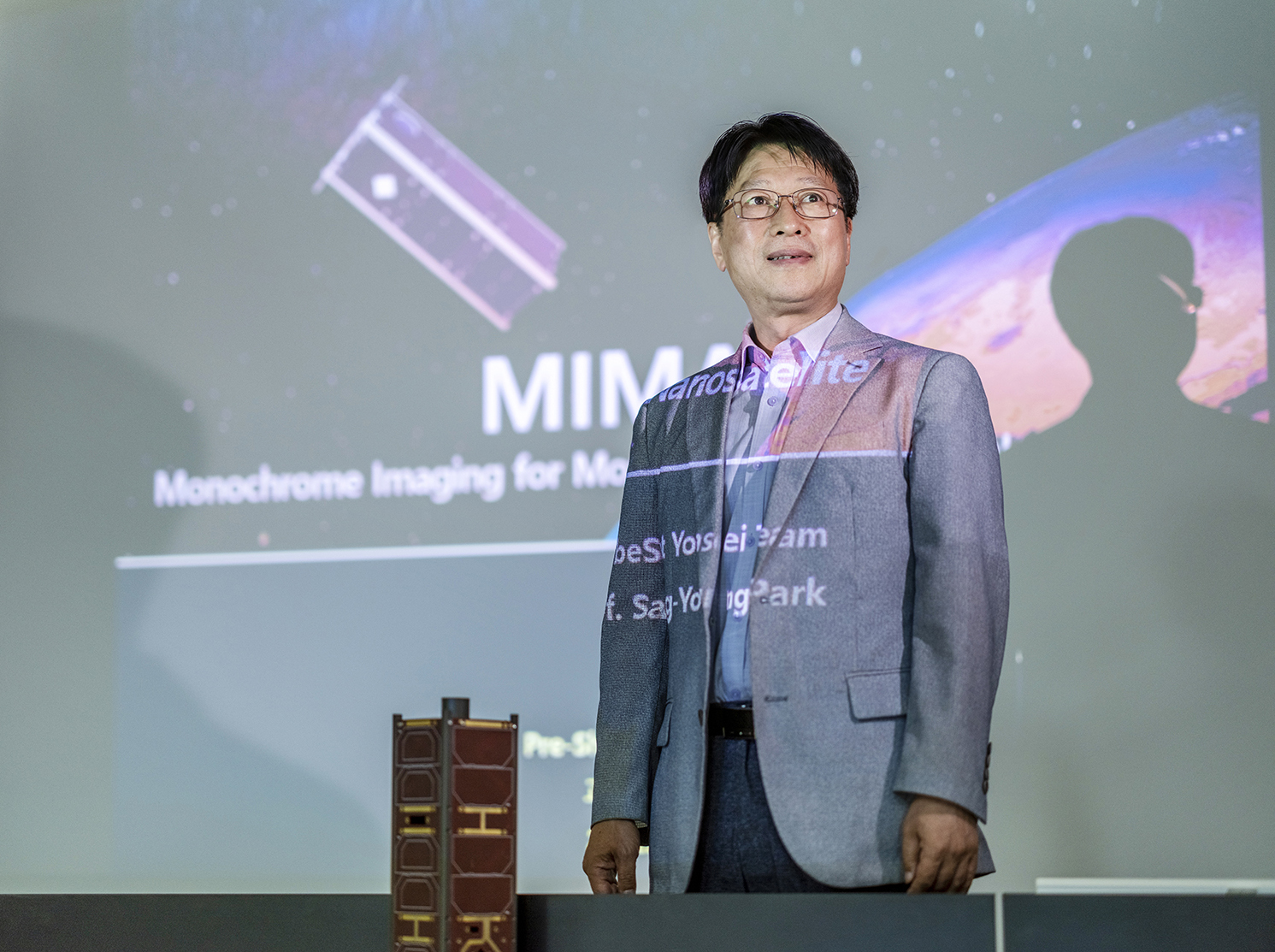
Technology Enhanced Through Three Satellite Developments and Rising Success Rate
The MIMAN is the third nanosatellite developed by Cubesat Yonsei. The "CANYVAL-X" nanosatellite, which aimed to test satellite flight formation technology for developing a virtual space telescope system, was their first challenge. Subsequently, in 2017, based on the formation flight technology researched from the CANYVAL-X, the "CANYVAL-C" nanosatellite was developed as a follow-up with the mission to photograph the sun's corona by freely adjusting the space telescope's focal length.
The three satellites, including the MIMAN, were all shortlisted for the "cubesat contests," each time hosted by the Republic of Korea Ministry of Science and ICT and the Korea Aerospace Research Institute, and the team gained recognition for their innovation in satellite concept and idea application technology, eventually gaining the opportunity to launch their nanosatellite into space. The previous two challenges involved sophisticated technologies with considerable technical challenges. And the second attempt was a failure as the switch that supplies power went broken at the stage of mounting the cube satellite on the projectile while the research team was unable to go to the site due to the COVID-19 pandemic. Yet, Cubesat Yonsei gained valuable lessons from this experience and successfully created the MIMAN based on accumulated know-how and improved technology.
"The formation flight alignment mission, which was applied when we developed the CANYVAL-X and the CANYVAL-C, is actually a very sophisticated technology with much technical difficulty. It can be said that we attempted to master the most difficult technique from the beginning. Nevertheless, since the experience of success was also important for students, the technicality of the MIMAN was simplified to some extent. Unlike the CANYVAL satellites, which were made of two nanosatellites respectively, we applied missions and hardware with a higher likelihood of success, which can also be used practically in real life. At the initial stage, four solar panels were installed to provide electricity to satellites through solar energy, as these panels would spread out from the satellite like wings. It looks cool, but we wanted to increase the success rate by making it as simple and efficient as possible since such features required additional devices while adding to the possible chance of malfunction. In addition, we tried to attain perfection in the development and parts assembly stages, which is why I'm confident in the success of the MIMAN in carrying out its subsequently planned mission."
- Professor Sang-Young Park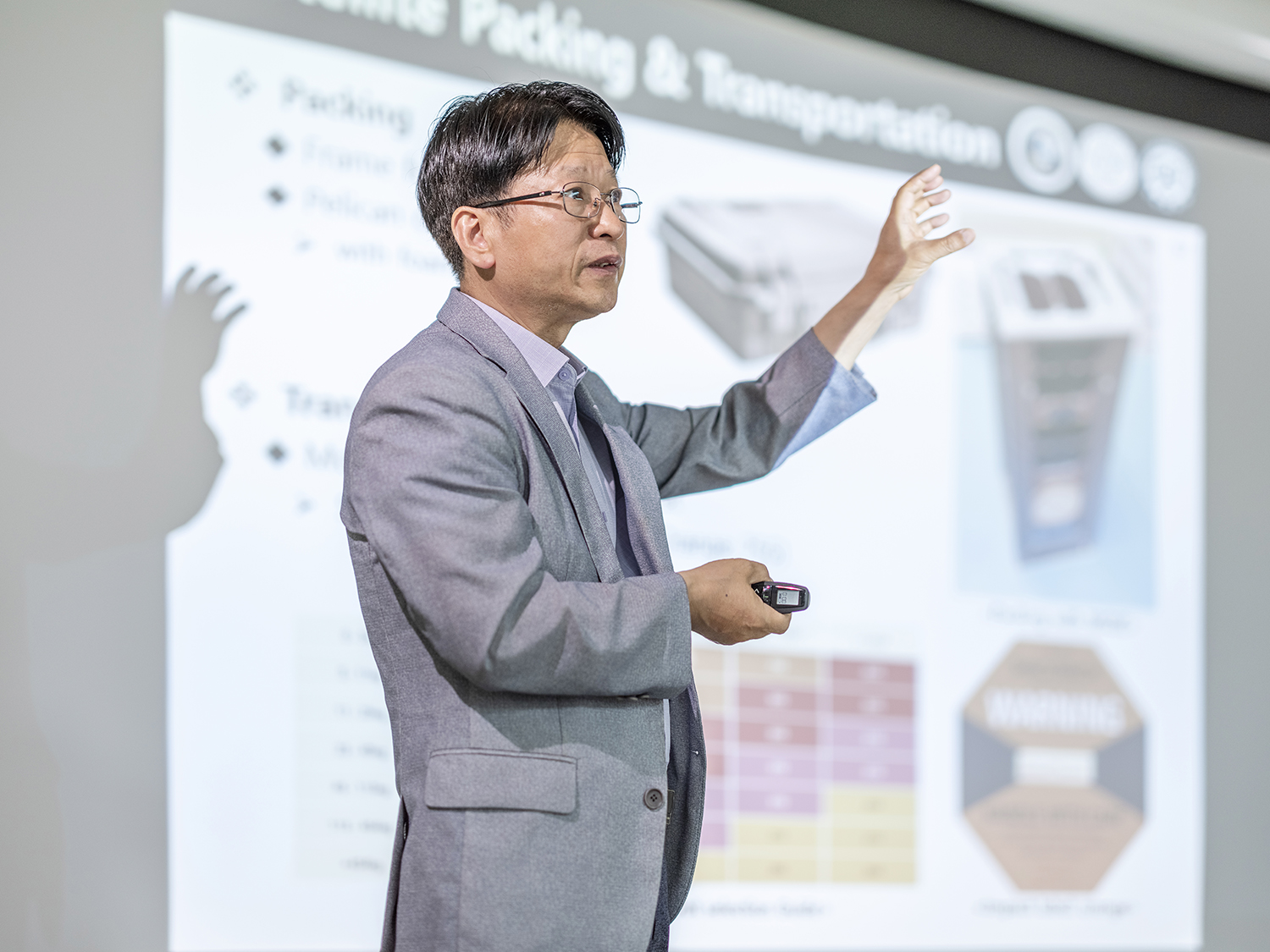
Because They Were Yonseians
The challenge of Cubesat Yonsei, which has been attempted since the early days of attention on the development of cube satellites, was actually possible "because they were Yonseians."
"Studying and realizing the various knowledge and skills required for satellite development was the primary goal of developing a cube satellite through the contests. Not only do such opportunities foster the growth of respective members at Cubesat Yonsei, but a conducive environment is also a necessity. Above all, Yonsei University's biggest strength lies in its being the best in Korea in all fields of major, with many excellent students across various majors. There is no better environment for satellite development that requires convergence in various fields such as mathematics, optics, electronic engineering, and mechanical engineering. In this respect, I think it was a project that best revealed and fully utilized Yonsei University's strengths."
- Dae-Eun Kang, Leader of Cubesat Yonsei (Astronomy, entering class of '11, Integrated MSc and PhD, entering class of '16)
Yonsei University, widely receiving recognition in research in space engineering, especially satellite development, has sufficient infrastructure to support such projects, such as the S-Band antennas that receive signals from satellites and facilities for operating and monitoring satellites. On top of that, Professor Park's willingness and support to nurture the students have become a stepping stone for success.
"Since we are still students, we would often get lost in areas where we don't have the expertise, and every time we are faced with such a challenge, our advisor would go around asking domestic professionals for timely advice. Thanks to such endless support, we were able to improve our skills and complete the development of the nanosatellite."
- Dae-Eun Kang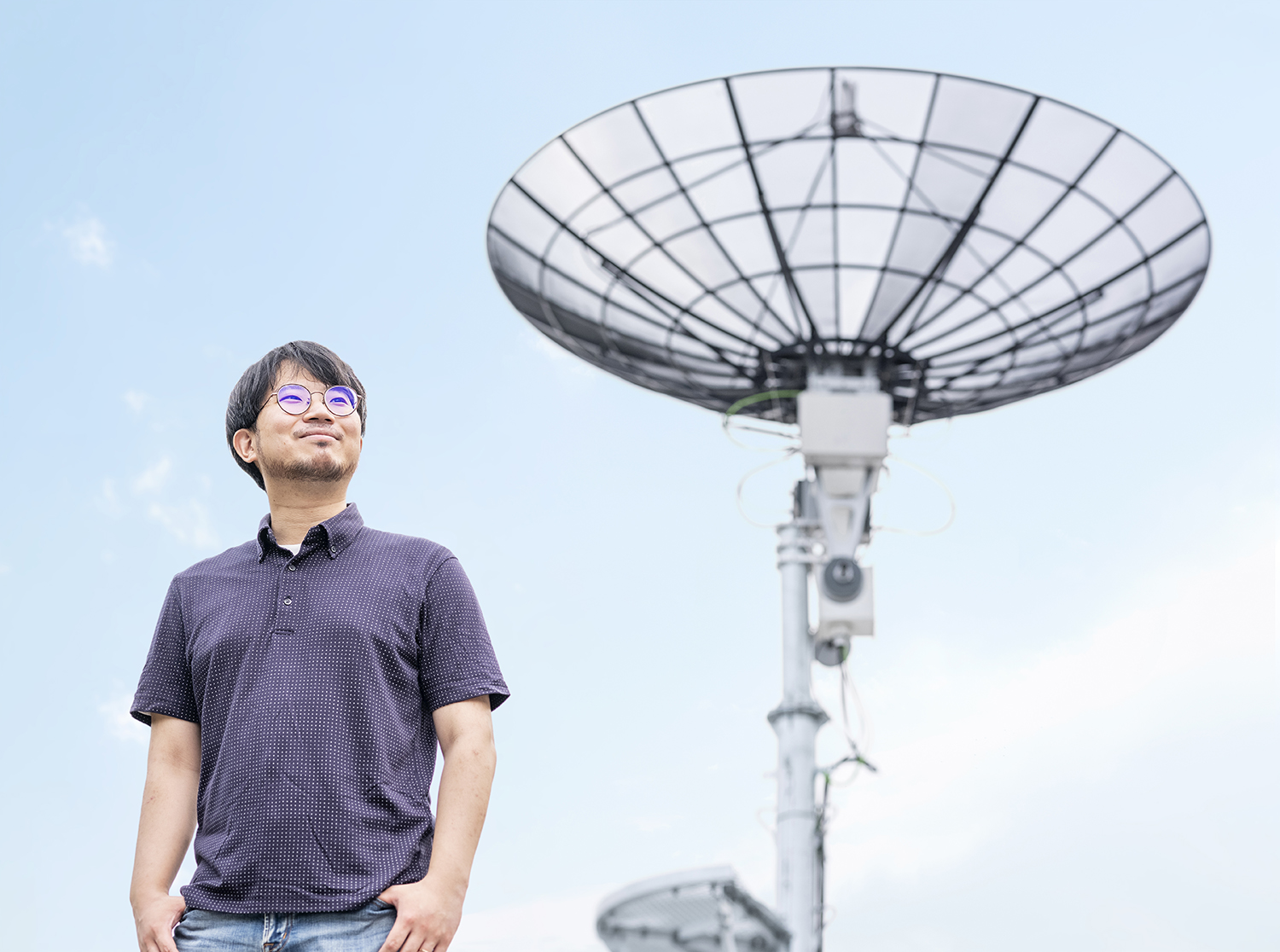
The enthusiasm and hard work of the team members added momentum to the satellite development. All the students participating in Cubesat Yonsei voluntarily participated in the projects with a strong passion for satellite development. With Cubesat Yonsei being open to undergraduates as well, there were often cases where students would participate in the projects as an undergraduate and later pursue further education in graduate school or work in the related sectors as they expanded their interests in satellite development. This is the reason behind the continuous endeavors of Cubesat Yonsei in cube satellite development that marked its start from the CANYVAL-X.
"I've been participating in Cubesat Yonsei since I was an undergraduate, and I recall being involved with the process of drawing the foundation sketch of the MIMAN. Though now I am involved in structural design, I used to do a lot of research back in those days. The process of developing the MIMAN was fascinating, and every moment was indeed fulfilling, especially since the project was all about materializing the learnings from lectures into an actual end product. As I had to leave the team without seeing the project until the end if I graduate, it eventually led me to pursue further studies at graduate school, with the desire to take responsibility until the end."
- Dae-Eun Kang
"With an avid interest in space during my middle and high school days, such passion led me to pursue my studies at Yonsei University. While learning about the stars of the universe, after taking a lecture on satellites taught by Professor Park, I gained interest in this field. So I have participated in the MIMAN project since my undergraduate years, taking charge of developing systems related to wattmeter."
- Seunggwon Jeon (Astronomy, entering class of '15, master's course, entering class of '20)
Perfection Is the Only Key to Success
In fact, satellite development is a project involving years of constant trial and error. Additionally, as students from various majors strive for perfection in their respective fields of responsibility within the project, there were many things each member was eager for, so there were many things to coordinate. However, with the space allocated within the cube satellite being significantly limited, efficient use of space was quintessential.
"There were so many things that respective members wanted to include, with so little space available. Since effective space utilization was the key, the team initially came up with the idea to design a satellite that could be assembled all at once as a cube, but come to think of it; such a structure would be tricky when it comes to risk management. In the event of a malfunction, we thought that it would be challenging to repair or supplement specific parts individually, which led us to completely renew the structure to separate parts by function. Since such a structure was unprecedented, we even made mock-ups before the development."
- Young-Eon Kim (Astronomy, entering class of '14, master's course, entering class of '21)
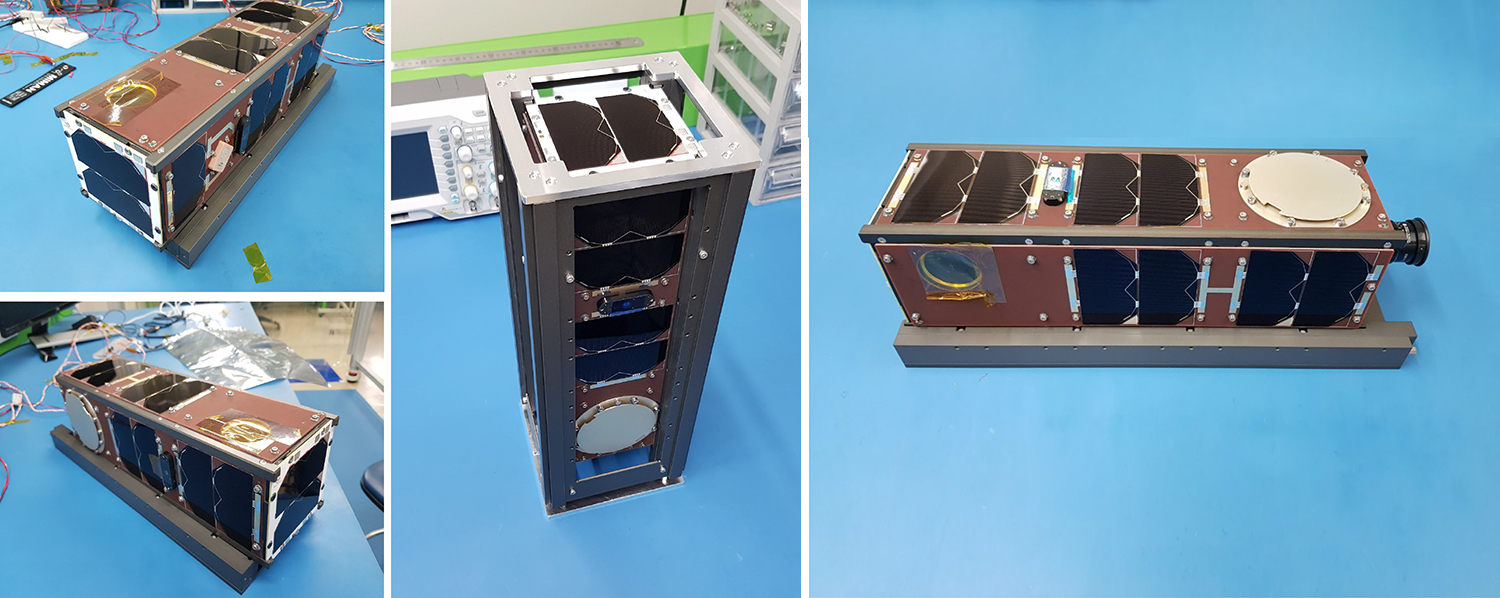 Weight of the Completed MIMAN is 3738g. / Contributed by Cubesat Yonsei
Weight of the Completed MIMAN is 3738g. / Contributed by Cubesat YonseiIn addition to the meticulous test process, the team members criticized, supplemented, and coordinated together to improve the MIMAN's completeness, but sometimes they had to encounter completely unexpected obstacles and start from scratch in some cases. In the end, the only answer to satellite development was to ensure perfection from a very detailed stage and to take a steady step forward.
"Though the parts for the cube satellite were commercially available for purchase, the circuits to connect individual parts had to be developed by ourselves. With countless wires and pins to connect, there were inevitably mistakes made during the development. There was even an instance where the team discovered that a pair of wires was flipped after the assembly, despite a thorough review by respective teams within the project. We tried to seek convenient methods to resolve the issue without dismantling, but to ensure the safety of the satellite, we eventually had to dismantle it to reassemble it carefully. Such experiences taught us that being meticulous is the key from the beginning to the end, and there is never an expedient when it comes to system development."
- Dae-Eun Kang
Going Beyond Admiration, Opening Doors to Possibilities
Cubesat Yonsei's journey does not end with completing the MIMAN's development; other new challenges are continuing. The team is currently participating in the national cube satellite contest, successfully proceeding to the second round. Setting climate change monitoring enhanced via the MIMAN as a mission, they are challenging themselves to pursue the field of the high-end satellite. As has been done so far, based on the experience and accumulated know-how, the team seeks to leap forward by developing a more sophisticated and advanced cube satellite. In addition, through collaborations with the ROK Agency for Defense Development (ADD) and private corporations, Cubesat Yonsei is also developing a cube satellite capable of optic communication in formation flights and a cube satellite that measures the accuracy of lasers projected from the ground.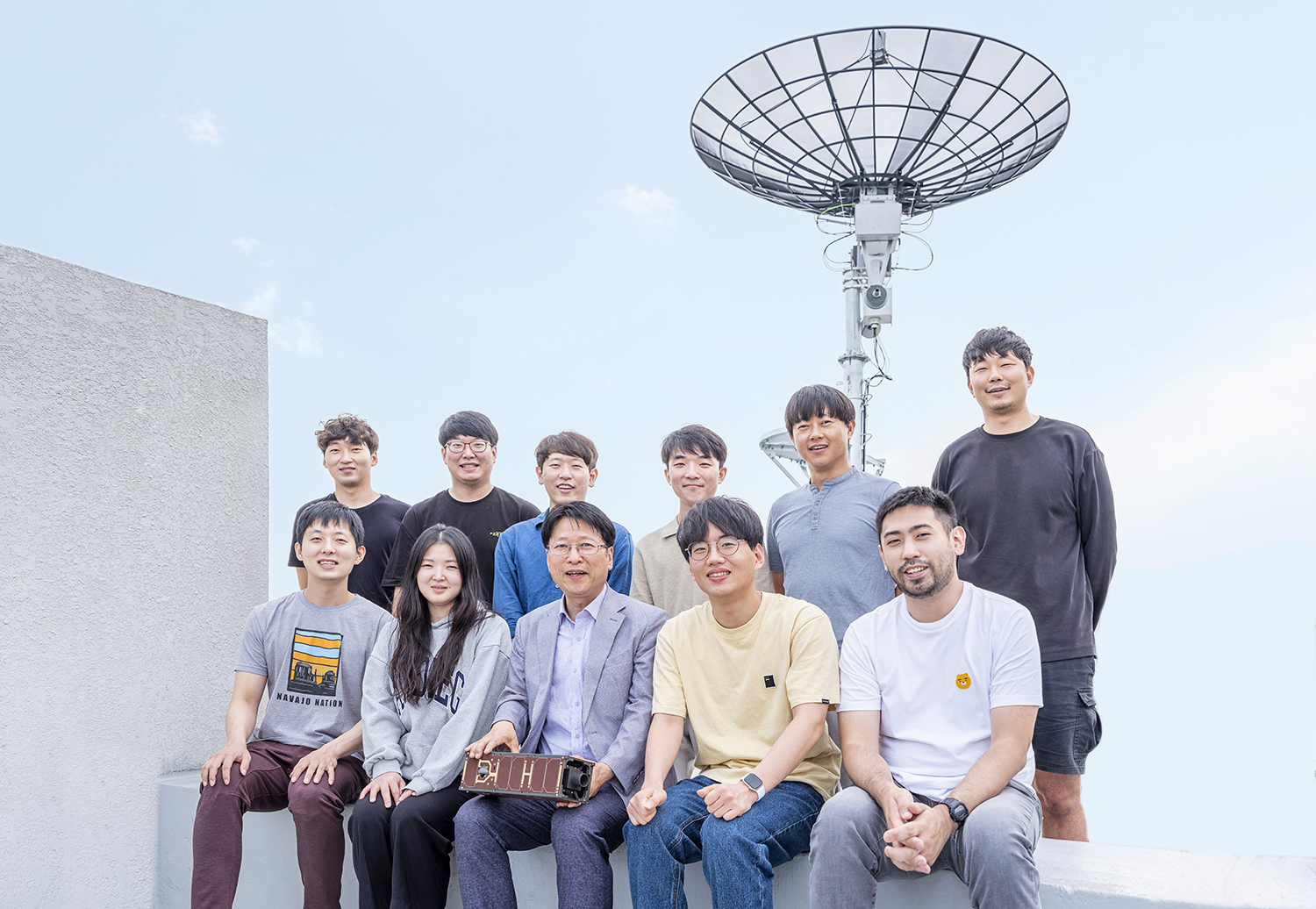
When the Nuri's performance verification satellite, which successfully landed in orbit on June 21, stabilizes, four cube satellites developed by respective universities will be deployed over two-day intervals. Cubesat Yonsei's MIMAN deployment is scheduled for July 5. If communication with the ground station is successful after deployment, the MIMAN will carry out a mission to detect fine dust. Cubesat Yonsei plans to conduct ground station operation training until the deployment date. Even amidst the atmosphere of relief from the success of the launch of the Nuri, members of Cubesat Yonsei will be spending each day nervous in anticipation until they attempt to communicate with the MIMAN after its successful deployment.
The decade of efforts of Cubesat Yonsei has been a journey into the unknown with infinite possibilities. Every step of the decade has accumulated to become the driving force behind Yonsei University's satellite development. In the contemporary space age, where humanity is going beyond the longing for space, we look forward to the new footsteps that Cubesat Yonsei leave as they realize their possibilities while drawing their own blueprints for the next generation of space research.
show mobile menu
mobile menu

